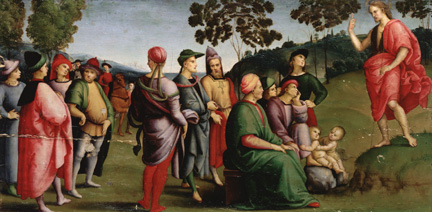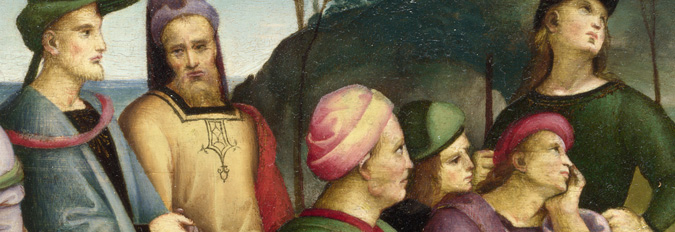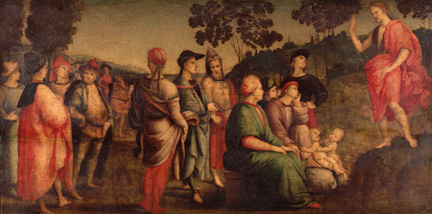The conservation of paintings involves their preservation, the halting of processes that damage them, and their repair. Museums put much effort into preventive care. In particular there is a focus on the maintenance of a stable environment that is favourable to the works.
This environment needs to be maintained whether works are on display, in store or on loan to exhibitions. This requires the constant monitoring of humidity, temperature and light, along with regular inspection of the works to determine whether their condition is changing.
The Ansidei altapiece
Raphael’s panel depicting Saint John the Baptist preaching was bought by the National Gallery in 1983. It is the only surviving scene from the predella of Raphael’s altarpiece for the Ansidei chapel in S. Fiorenzo in Perugia. The main panel, known as the Ansidei Madonna, had entered the National Gallery in 1885.
Before treatment
Compared with the main panel, which had been cleaned in 1956, the newly acquired predella panel looked very darkened and discoloured.
It was decided, therefore, that it too should be cleaned. After the surface dirt and the top layer of varnish had been removed, it became clear that the extreme dullness of the picture was due to a brownish-black layer. This covered all of the landscape, the trees on the left and much of the drapery.
This had clearly been applied to cover old retouchings and to fill in cracks in the original paint layer underneath.

After treatment
The removal of this brownish-black layer was a painstaking process, much of it carried out under magnification with a microscope.
After cleaning most of the painting’s original bright and colourful appearance has been recovered and following the retouching of the old losses the predella now matches better the main panel.



